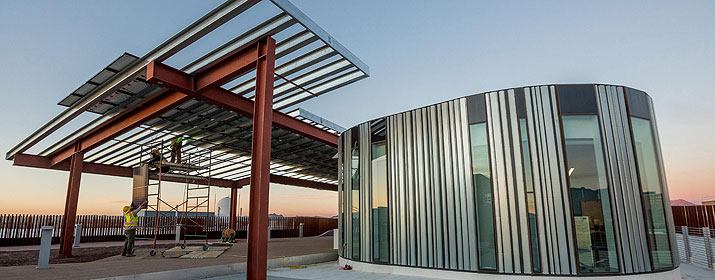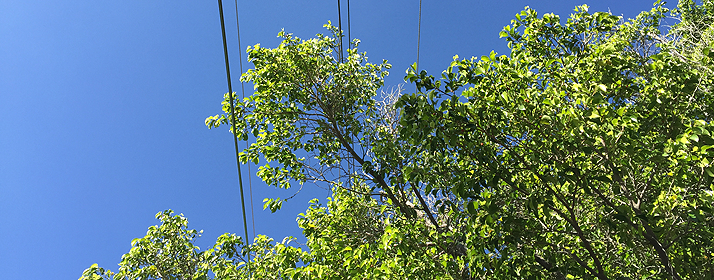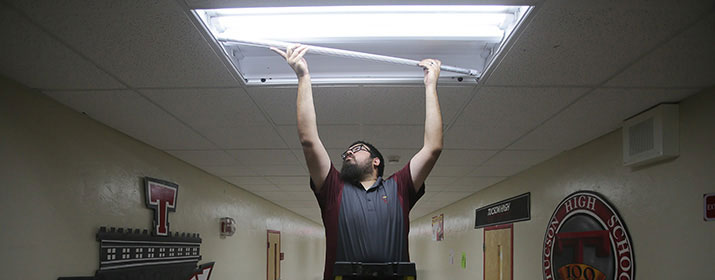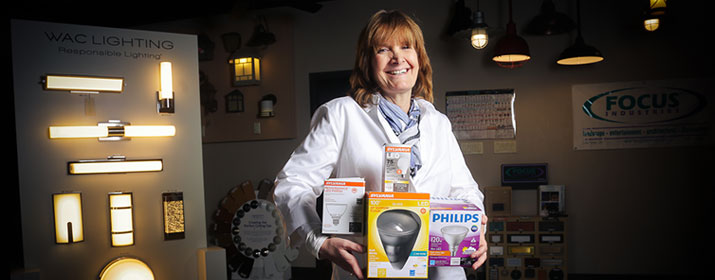
The University of Arizona’s most sustainable building is now greener than ever thanks to a partnership with Tucson Electric Power.
The Environment and Natural Resources 2 (ENR2) Building’s Rooftop Photovoltaic (PV)+ Project combines solar panels with rooftop garden plots in a system also called “agrivoltaics.” ENR2, located on UArizona’s main campus, is LEED Platinum certified and designed to display sustainability in a desert environment while providing state-of-the-art learning and meeting spaces for students and faculty.
Installation of the solar panels, donated by TEP, was completed last month. The 63-kilowatt (kW) solar canopy will generate power for customers while providing shade for the rooftop gardens. The partnership allows TEP to expand renewable energy resources in our community while supporting the school’s efforts to achieve its own sustainability goals.
“This project serves as an excellent example of how we can serve our customers’ energy needs while building a more sustainable community. This also continues a long and successful partnership between TEP and UA,” said Erik Bakken, Vice President of System Operations and Energy Resources. “We’re very excited about our ongoing efforts to reduce carbon emissions while providing more clean, green energy to Tucson.”
Solar panels typically perform less efficiently in very high temperatures. ENR2’s green roof is designed to help keep the panels cool. Evaporation of water from plants below the panels could reduce temperatures by as much as 20 degrees. Native plants will be planted on the roof and maintained to provide habitat and food for local pollinators. Shade from the panels will help to cool the plants and prevent water loss in extreme heat.
“I am very proud of the university’s efforts to expand its reliance on solar, wind and other renewable energy sources,” said UA President Robert C. Robbins. “There is no greater challenge faced by our world than addressing and mitigating the impacts of global climate change, and given our historic strengths in environmental sciences, it is imperative that the university set a strong example for our community. This rooftop installation demonstrates the usefulness of agrivoltaics and perfectly complements our existing partnership with TEP to offset all scope 2 emissions by 2021.”
The rooftop gardens will produce oxygen, capture rainwater and reduce storm water runoff. They’ll also reduce energy costs at the building, which houses classrooms and offices for the Arizona Institutes for Resilience; Office of Sustainability; Schools of Geography, Development, & the Environment and Natural Resources & the Environment; and the Department of Mathematics.
“This project is the culmination of three years of planning and advocacy and could not have happened without the efforts of students and our exciting partnership with TEP,” said Trevor Ledbetter, Director for the UArizona Office of Sustainability.
The ENR2 project will contribute to TEP’s ongoing expansion of renewable energy resources. Over the next year, TEP will complete a local solar plus storage system and two New Mexico wind farms that together will produce enough clean power to serve 144,000 homes. By 2035, TEP expects to produce 70 percent of our community’s energy from wind and solar resources while reducing carbon emissions 80 percent.
TEP is proud to support the university’s ambitious plan for greater sustainability. All of the power that TEP provides to the university’s Tucson campus will come from the new wind and solar resources by 2021. Through this partnership, the school will become the largest research university in the country with a plan to offset all of its “Scope Two” emissions – those produced by its utility provider. TEP provides about 60 percent of the energy used by the Tucson campus, with the rest generated on-site by solar panels and natural gas-fired resources.
TEP also offers programs that allow residential customers to buy some or all of their power from our local solar arrays. For more details, visit GoSolar with TEP.






